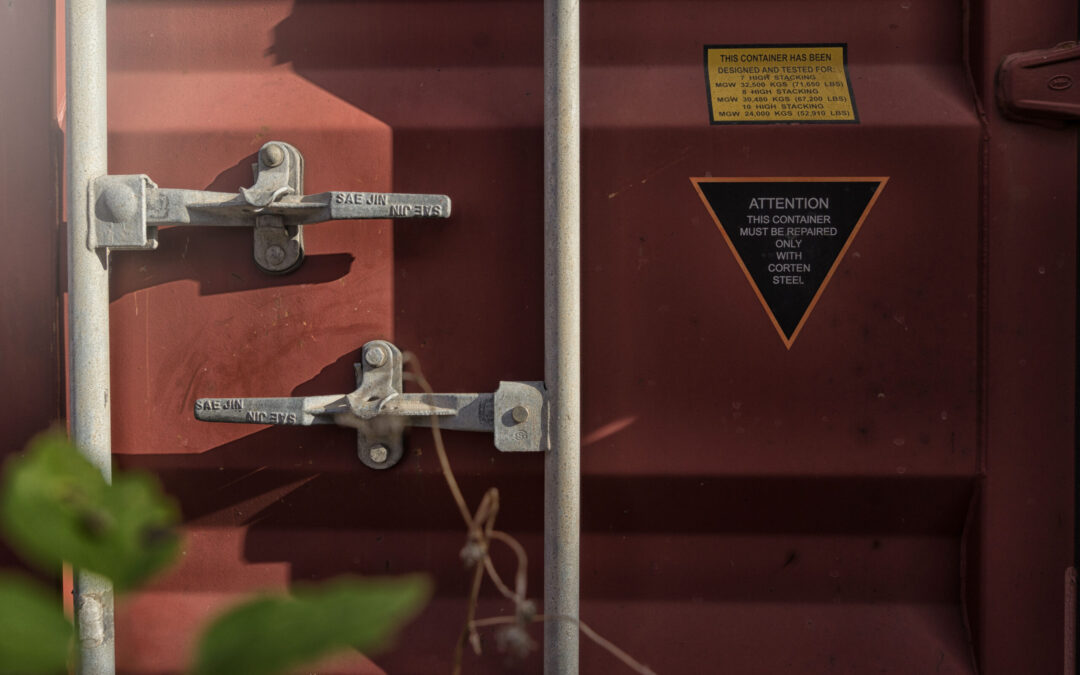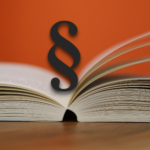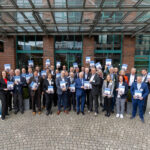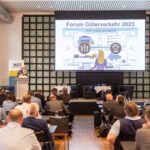Barrier-free across borders
With the technical pillar of the 4th railway package, the European Union (EU) is striving for rapid and sustainable harmonisation in international standard-gauge traffic so that cross-border rail traffic can run without obstacles. The member states are to consistently apply the interoperability standards and adapt the corresponding approval procedures. The basis for this standardisation is the Directive on the interoperability of the rail system in the European Union and the Technical Specifications for Interoperability (TSI) for the subsystems (infrastructure, energy, control-command and signalling, operations and traffic management, maintenance and telematics applications). Switzerland is adopting the elements of the technical pillar of the 4th railway package in partial steps.
What has happened so far
For many years, the authorisation procedures were the responsibility of the national authorities. In 2015, the Directorate-General for Mobility and Transport (MOVE) of the EU Commission came to the conclusion that the thrust of the harmonisation measures already implemented was correct, but that the implementation of the uniform regulations in the member states was only progressing at different speeds and that the national authorisation procedures still differed greatly from authority to authority despite common rules. As a result, the EU adopted the 4th EU Railway Package. Since 16 June 2019, the EU Railway Agency (ERA) has been responsible for issuing uniform safety certificates and approvals for rolling stock for cross-border traffic. For this purpose, it operates the online vehicle approval portal “One Stop Shop”. It works closely with the national supervisory authorities in checking the approval dossiers. On 21.12.2021, the FOT announced that Switzerland’s cooperation with the European Agency, in connection with the technical pillar of the 4th railway package – 1st step – was extended by a further year until the end of 2022. To the media release.
Three core elements
With the technical pillar, the EU Commission wants to remedy the identified weaknesses and strengthen the market position of the railway sector in the highly competitive travel and transport business (cf. Figure 1). The 4th EU Railway Package contains three essential elements:
- The applicable regulations are to be systematically harmonised in all participating states. This is done through institutional entry-into-force procedures of the TSIs and their updates. This means that TSIs published by the EU Commission are now directly valid in all states; there is no longer any need for national implementation processes.
- The ERA will now monitor the timely and complete removal of obsolete national regulations by the competent national supervisory authorities.
- The ERA now coordinates the licensing procedures and centrally issues uniform operating licences that are valid across all countries.
From summer 2019 to autumn 2020, all EU member states adapted their national regulations to the 4th railway package. Today, an application for authorisation can be made in ERA’s “One Stop Shop” and the corresponding dossier can be submitted. ERA examines the dossier with the involvement of the national supervisory authorities concerned and issues an operating licence that is directly valid in all the countries applied for.
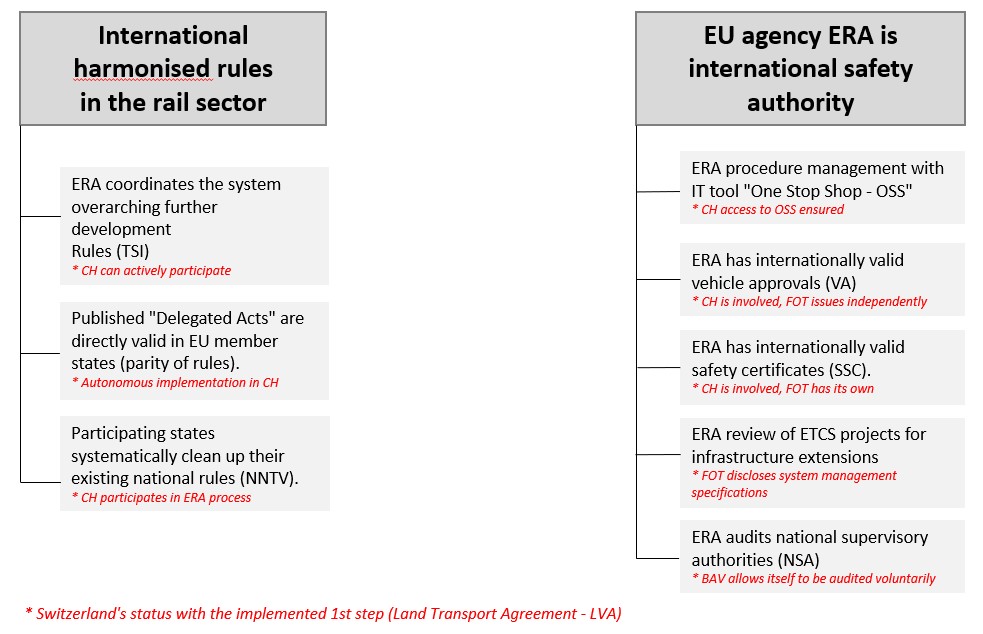
Figure 1: Elements of the technical pillar of the 4th EU railway package at a glance
Advantages outweigh disadvantages
The unification of standards and the centralisation of approval procedures bring significant advantages:
- Leaner and internationally uniform rules ensure more efficiency and clarity in the specification of subsystems and the provision of evidence for operating licences.
- The transparency of processing times and fees increases.
- An internationally valid ERA operating licence ensures faster and more predictable licensing procedures.
- There are no longer multiple procedures for multi-country approvals.
- For complex projects such as multi-system traction vehicles, the improvements are already clearly noticeable after a short introduction period.
There is still potential for optimisation in the approval procedures for standard freight wagons. This is because the scope of regulations here is enormous: numerous regulations are outdated and there are still many different additional national requirements.
Accelerated national streamlining
The streamlining of the still existing national regulations requires extensive adjustments in all Member States. It will soon lead to a significant reduction in the number of rules that need to be verified and in national differences. More uniform and up-to-date sovereign regulations in all European countries and a transnationally valid authorisation are a basic prerequisite for significantly strengthening European rail transport in the future and for establishing future-oriented innovations.
Switzerland follows suit
The Swiss standard gauge network is an integral part of the interoperable European railway system. We, too, are interested in obstacle-free rail transport across borders. For example, the Federal Office of Transport (FOT) has been striving for years within the framework of the overland transport agreement to ensure that the EU rules are appropriately implemented in Switzerland. In Switzerland, too, the TSIs now form the basis for the relevant railway subsystems in the standard gauge sector.
The central hub of EU-CH cooperation within the overland transport agreement is the joint committee. It meets every six months and its decisions are set out and published in the annexes to the Agreement on Land Transport.
In December 2019, Switzerland adopted a first part of the technical pillar of the 4th railway package. It includes the TSIs currently in force as well as access to the “One Stop Shop” of the ERA. The FOT already recognises the ERA examinations for the TSI proofs without any further examinations of its own. It only assesses compliance with the national regulations. This means that double checks are a thing of the past.
The EU recognises this first step of adoption only as a transitional solution and makes its continuation dependent on Switzerland’s progress in implementing the entire package. While the EU is satisfied with the progress of our adoption work, political tensions are increasingly jeopardising its continuation.
However, the power of disposal remains with the FOT and the legal process under Swiss law continues to apply. For legal reasons, ERA cannot currently issue an operating licence for Swiss territory. Nevertheless, the international harmonisation of licensing procedures is already leading to a noticeable simplification for applicants and, in most cases, to an acceleration of the licensing procedures.
Revision of railway legislation
If Switzerland were to comprehensively adopt the technical pillar of the 4th EU railway package, the players in the Swiss railway industry could benefit further. To this end, the FOT has initiated a systematic revision of the Railway Act (EBG) as well as the relevant ordinances (in particular the Railway Ordinance EBV); the consultation was opened on 17 December. The revision package brings the following advantages: On the one hand, state-of-the-art regulations are the prerequisite for plannable approval procedures. On the other hand, the FOT will be able to update the technical and operational rules more efficiently and promptly in future thanks to leaner entry into force procedures at the level of the implementing provisions.
In principle, the internationally harmonised EU requirements should also apply in the Swiss standard gauge sector. Where necessary, these will be supplemented by national rules.
Adaptation process underway
The FOT is consistently continuing the process of dismantling previous national rules and thereby streamlining the sovereign regulations. In future, the uniform ERA operating licences will be sufficient for the Swiss standard gauge network without an additional FOT decree.
After the consultation, the FOT evaluates the feedback from the industry, completes the dispatch on the amendment of the EBG and submits it to the Federal Council for consideration in parliament. The revision of the EBG and the adaptation of the EBV will continue the harmonisation of the rules between the EU and Switzerland. In addition, the Land Transport Agreement is to be adapted. To this end, Switzerland and the EU must reach agreement at the political level.
Innovation boost needed
The technical pillar of the 4th EU railway package will enable future innovations in the railway sector – which the sector urgently needs in order to remain a competitive partner in the highly competitive transport sector. Under the leadership of the EU Commission, specification work was initiated in the areas of system (System Pillar) and innovation (Innovation Pillar). The European Freight Digital Automatic Coupler Delivery Program (EDDP) has the mandate to develop operational solutions for the innovation of freight transport.
The path taken is crucial for the future-oriented further development of the rail sector – in the EU as well as in Switzerland. Only in this way will Europe and Switzerland have a real chance of meeting the high political expectations with regard to the desired energy transition within a reasonable timeframe.
